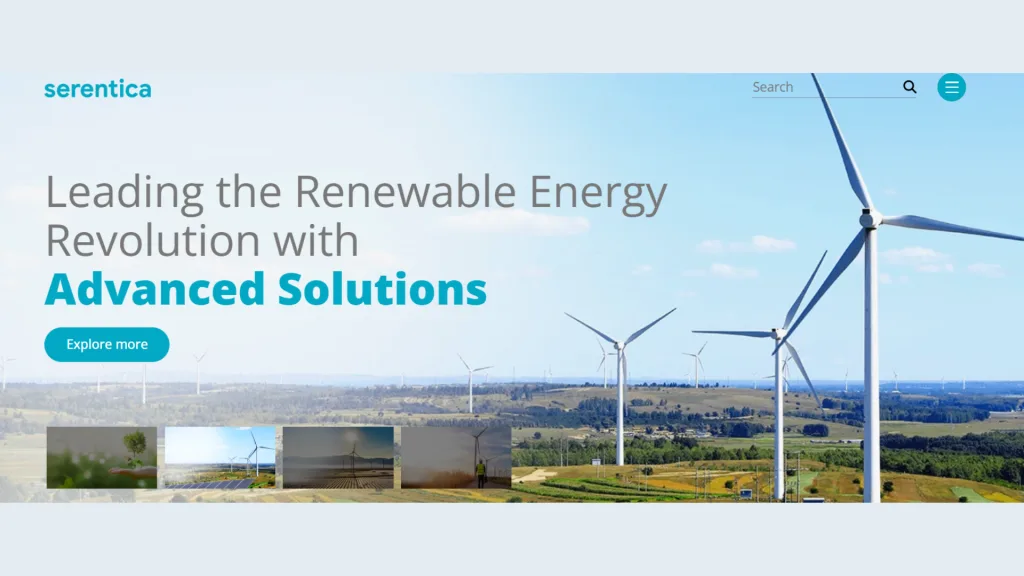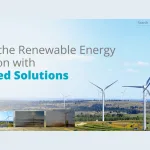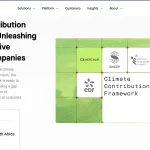KKR Backed Serentica Targets Up to $8 Billion Raise for India’s Green Energy Expansion

• Serentica plans to raise $6–8 billion over five years to expand its clean energy portfolio to 17 GW by 2029/30.
• India’s pipeline includes 3–5 GW of operating and under-construction assets available for acquisition, with renewables central to the country’s 2030 power targets.
• Sister company Resonia aims to invest $1.5–2.5 billion annually to accelerate grid build-out and secure $2–3 billion in transmission projects each year.
Serentica Sets Ambitious Course for India’s Clean Power Build-Out
Serentica Renewables, the KKR-backed independent power producer, plans to raise between $6 billion and $8 billion over the next five years as part of a sweeping expansion strategy that would more than double its clean energy footprint across India. Chairman Pratik Agarwal said the capital will support both acquisitions and new-build projects as the company targets a 17-gigawatt portfolio by the end of the decade.
The funding ambition forms part of a wider $10–11 billion investment plan running through 2029/30. Agarwal said Serentica is actively evaluating assets already generating power or nearing completion. With India seeing an unusual wave of projects changing hands, he expects the company to lean into the opportunity. “The acquisitions are purely opportunistic and value-based,” he said.

Serentica currently operates 2 GW of installed wind and solar capacity, with another 2 GW scheduled to come online within the next 10 months. For a market in the midst of rapid transformation, the company’s approach reflects a shift among developers toward scale, portfolio diversification, and securing long-term visibility amid rising demand for clean energy from industrial clients.
Financing Roadmap Takes Shape
Agarwal noted that the first phase of Serentica’s capital programme—about $3 billion—is fully funded. The next $2 billion tranche is partially secured, with discussions ongoing to close the remaining commitments. The structure mirrors a broader trend in India’s renewable energy market, where a combination of global private equity, sovereign investors, and corporate buyers is reshaping the sector’s financing landscape.
India’s policy targets remain a central driver. The government aims to double non-fossil electricity capacity to 500 GW by 2030, requiring both an acceleration of new renewable installations and consolidation within the sector. That landscape has created a pool of 3–5 GW of assets now for sale, giving capital-backed developers like Serentica room to build scale quickly through both organic and acquisition-led growth.
RELATED ARTICLE: KKR to Invest $400 Million in Decarbonization Platform Serentica Renewables
Transmission Build-Out Emerges as Critical National Priority
Parallel to Serentica’s generation push, Resonia—created after the break-up of Sterlite Power—is gearing up to deploy between $1.5 billion and $2.5 billion annually in power transmission. The company is backed by Singapore’s sovereign wealth fund GIC and is positioning itself as a key player in India’s effort to upgrade the infrastructure needed to carry renewable power from remote regions to demand centres.
Agarwal said Resonia aims to secure $2–3 billion in projects every year, aligning with India’s expectation of awarding $14–16 billion worth of transmission tenders in the coming period. The investment scale reinforces how grid constraints have become one of the biggest risks to India’s energy transition. “The country needs to rapidly expand its transmission infrastructure to be able to transmit power from all the new renewable energy projects,” he said.
The strategy aligns with India’s broader governance priorities: accelerating transmission corridors, expanding interstate capacity, and ensuring the grid can handle increasingly intermittent renewable resources. For institutional investors, the outlook creates a pipeline of long-tenor, regulated-return opportunities at a time when infrastructure allocations are rising globally.
Implications for Investors and Policy Stakeholders
For C-suite leaders and global investors, Serentica’s planned raise speaks to the pace at which India’s energy transition is accelerating and the scale of capital now required to meet national climate goals. Large developers backed by deep-pocketed investors may increasingly define the market, particularly as industrial and commercial buyers seek stable renewable supply through long-term power agreements.
The government’s push to fast-track transmission also alters the risk landscape. Stronger grid infrastructure reduces curtailment risks and improves project bankability, creating a more favourable environment for global capital. With tenders expected to multiply, the next few years may be decisive in establishing India’s modern power backbone.
The Broader Global Context
India’s renewable expansion sits within a global recalibration of clean energy investment. As economies compete for capital and supply chains, India is attempting to anchor its position with scale, policy clarity, and infrastructure deployment. The country’s ability to execute both generation and grid build-out at this pace will have implications not only for its domestic climate targets but also for global emissions trajectories, given its role as one of the world’s largest energy consumers.
Serentica’s multibillion-dollar funding plan and Resonia’s transmission ambitions illustrate the extent to which private capital is shaping the next stage of India’s power system. Whether the momentum holds will depend on continued policy stability, rapid permitting, and the resilience of global capital flows into emerging markets.
Follow ESG News on LinkedIn












